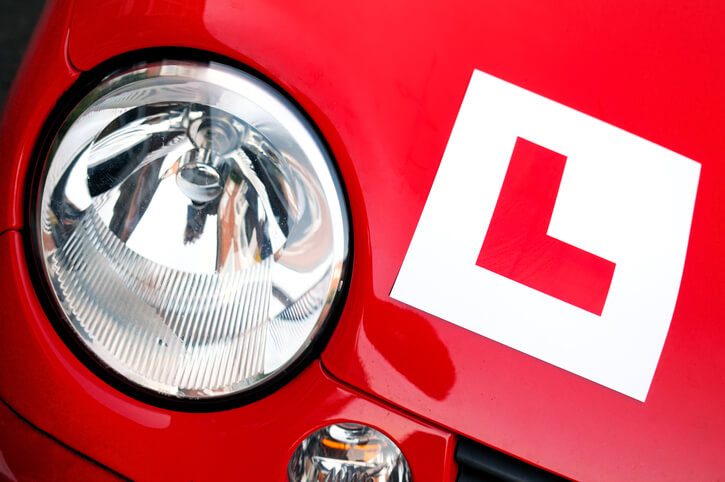Do driving instructor cars need L plates? The rules and regulations
24/07/2020
Before taking a learner driver out, both the instructor and learner must meet all the legal requirements outlined by the Driver and Vehicle Standards Agency in the national standard for driver and rider training. The standard is important in ensuring that learner drivers not only learn in a safe environment but also take caution on the roads.
One of the key requirements under the standard is the national standard for driving cars, which outlines key requirements that motorists must understand and comply with to promote safe and responsible driving. Under the standard red L-plates are listed as mandatory signs for learner drivers and instructors in the UK.

What are L-Plates and why are they necessary?
An L-plate is a large single red letter L on a white paper mounted on the front or rear of a vehicle to alert road users that a novice driver is controlling the car. The first official driving test happened in 1936 in the UK and benchmarked the mandatory use of L-plates.
Learner drivers are more prone to misguided judgement and unpredictable reactions hence people around them should practice patience and precaution. L-plates are mandatory for all learner drivers in England, Scotland, and Northern Ireland with the variation of D-plates used in Wales due to the language variation. However, you can still use L-plates in Wales as an acknowledgement of your bilingual status, while in control of the car.
L-Plate Specifications
L-plate must comply with size and dimensional specifications under the UK Highway Code. The plate must be 178*178mm square in length and height while the L must be 102mm tall and 89mm wide with 38 mm covering the height of the ascender. These dimensions allow the plate to appear at a 90-degree angle to the car door, which does not obstruct the driver’s rear-view. In addition, the plates are visible to other road users 50 metres in front and behind the vehicle.
Non-compliance to these size and dimensional requirements attracts an LC20 offence equal to not displaying the plate at all. You will receive six points on your licenses and a fine of up to £100.
L Plates Rules
If you are not a learner driver, the L-plates should be removed from your car. The rule also applies to those with full UK licenses sharing a car with a learner- when the fully licensed driver is behind the wheel, the L-plate should be taken off.
Driving instructors, like learner drivers, are required to have the L-plates on at all times, even when the instructor is behind the wheel. Despite displaying the L-plate, instructors are expected to take extra caution with learners to ensure they remain supervised and follow all traffic laws, failure to which attracts up to six penalty points on your license.
The law also permits instructors using their personal cars to remove the signs after each practise drive unless the vehicle belongs to a registered and licensed driving school.
Although there are no specific laws on where the plates should be placed, the Highway Code allows for a degree of common sense by stating that the plates should be placed conspicuous position on the front and rear of the vehicle. It is advisable not to place the plates on the windscreen as this decreases visibility, front grill as it blocks airflow into the engine, and lower bumpers as it will not be visible to other road users.
Why do Driving Instructors Need L-Plates
Approved Driving Instructors (ADIs) rent or own a training vehicle. However, in some instances, they will be required to use a modified vehicle to meet the special needs of their students. In this case, L-plates are mandatory for the instructor. Furthermore, instructors need insurance that covers training to cover all parties in the event of an accident.
There are insurance companies that specialize in ADI covers and will require the instructor to have the dual controls on their vehicles. When using your car to advertise your training services, insurers require the signs to be mounted securely.
Buyers Guide for Driving Instructor L-plates
Plates vary in quality with inferior plates fading and falling off with time. Buying quality branded L-Plates results in better adhesion even after ageing or when travelling at high speeds. The major types of plates you purchase for longevity purposes include
- Magnetic strips at the top and bottom
- Sticky back adhesive plates
- Magnet covering the entire rear of the plate
Due to traffic restrictions that prohibit learners from accessing motorways, instructors can print their own plates provided they meet the size and dimensional requirements of the British government. Printed plates are easier to remove and do not damage the vehicle’s paintwork as compared to adhesive plates when removing. Whichever plate you decide to use, ensure the vehicle surface is free of dust, grease and dirt to prevent plates from falling off.
View our range of L-plates to find what you are looking for.
